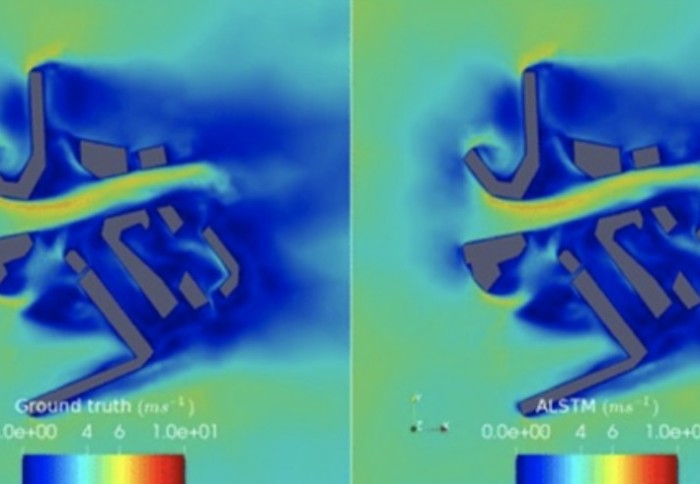New method uses machine learning for more robust fluid dynamics simulations
by Gemma Ralton

A new method that uses advanced machine learning techniques can improve the accuracy of predictions from computational fluid dynamics simulations.
Machine learning experts from Imperial’s Data Science Institute as part of the INHALE project, have developed a new workflow applicable to any research or engineering field that uses computational fluid dynamics, from designing aircraft and cars, to predicting weather patterns and air pollution levels.
There is a growing interest in the use of machine learning techniques to improve the accuracy and efficiency of computational fluid dynamics – a field that involves using numerical methods to solve complex equations describing the behaviour of fluids such as air or water.
By applying their new framework on two different case studies, the researchers including Research Associate Dr César Quilodrán Casas and Lecturer in machine learning Dr Rossella Arcucci were able to demonstrate the effectiveness of their proposed model using real-world scenarios involving air pollution flows.
The study, published in Physica A: Statistical Mechanics and its Applications uses deep learning - a subfield of machine learning, and a technique used in deep learning called adversarial training which helps to make the models more trustworthy.
Surrogate models
Traditional computational fluid dynamics simulations can be computationally expensive and time consuming, which limits their use in real-world applications.
Surrogate models are often used to address these challenges, providing a simplified version of a computationally expensive model whilst still producing accurate predictions or simulations. However, it is difficult to create surrogate models that accurately capture the behaviour of fluids, especially in complex scenarios such as monitoring air pollution flows.
Machine learning techniques offer a promising solution to this problem by creating surrogate models that can accurately predict the behaviour of fluids with much less computational cost.
Adversarial training
In the method, the DSI team use a machine learning technique called adversarial training to address the aforementioned challenges, creating surrogate models that are more accurate and efficient than those produced through traditional methods.
Adversarial training is a technique used in deep learning to make computer models more robust against attacks that deliberately try and deceive them. This involves training the model on both the original data and data that has been modified to stimulate an attack.
By exposing the model to these adversarial examples, it can learn to recognise and ignore them, making the model more resistant to future attacks.
Through using adversarial training in their model, the researchers were able to provide surrogate models that are more accurate and efficient, even with limited data available for training.

Next steps
According to Lead Author Dr Quilodrán-Casas: “The new workflow we have created has the ability to help and assist engineers and modellers towards creating cheap and accurate model surrogates of expensive Computer Fluid Dynamics simulations, not necessarily just for air pollution”
This study demonstrates the effectiveness of adversarial training for creating surrogate models that accurately capture the behaviour of fluids in complex scenarios such as urban air pollution flows.
The team’s findings could also be useful to engineers and designers who work with fluid systems, such as aircrafts and cars, and who are interested in optimising their designs using computational models.
Following on from this study, Dr Quilodrán-Casas will be using the new workflow upcoming research into wave energy flows and beyond this, the method could be applied to other domains aside from computational fluid dynamics such as weather forecasting.
-
‘A data-driven adversarial machine learning for 3D surrogates of unstructured computational fluid dynamic simulations’ by Quilodrán-Casas and Arcucci, published on 21 February 2023 in Physica A: Statistical Mechanics and its Applications.
Article text (excluding photos or graphics) © Imperial College London.
Photos and graphics subject to third party copyright used with permission or © Imperial College London.
Reporter
Gemma Ralton
Faculty of Engineering